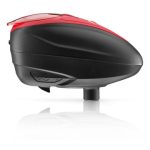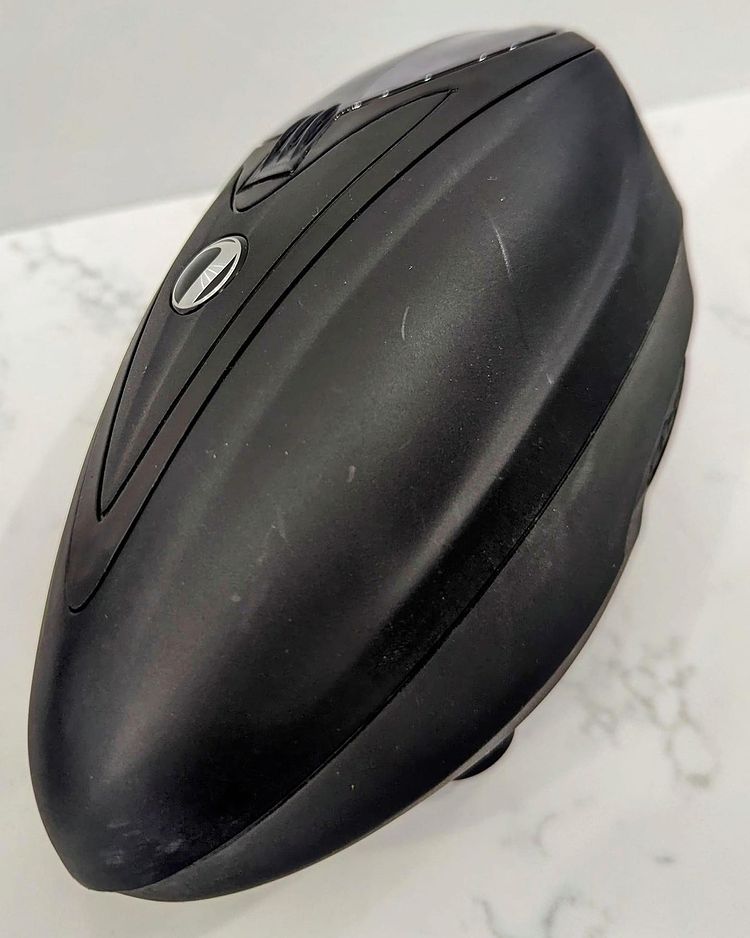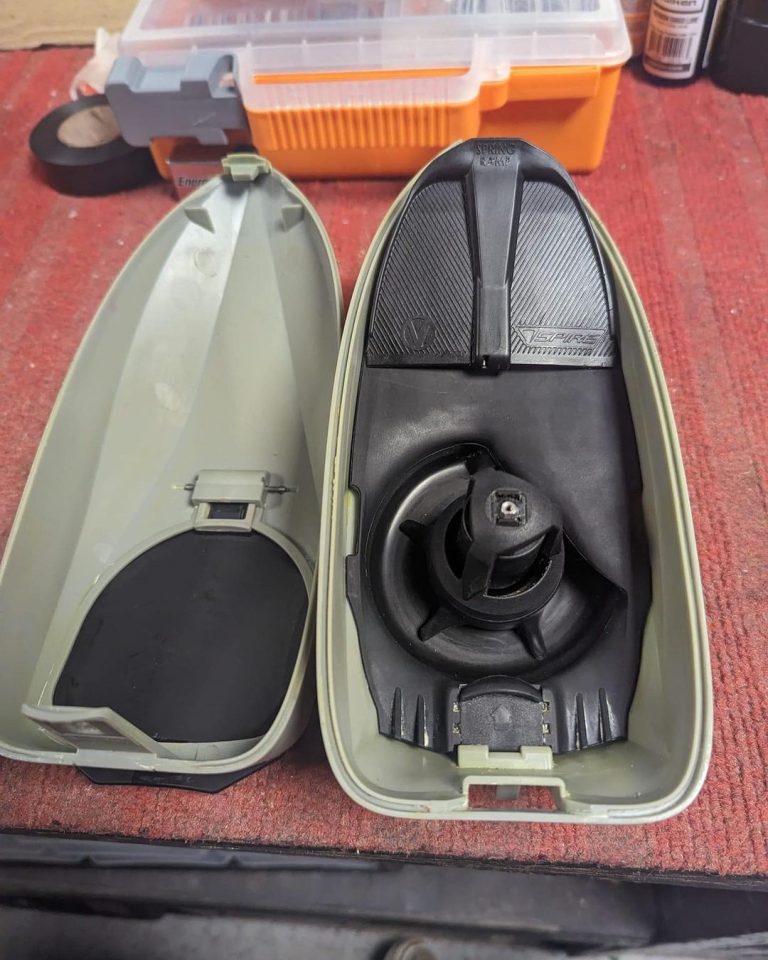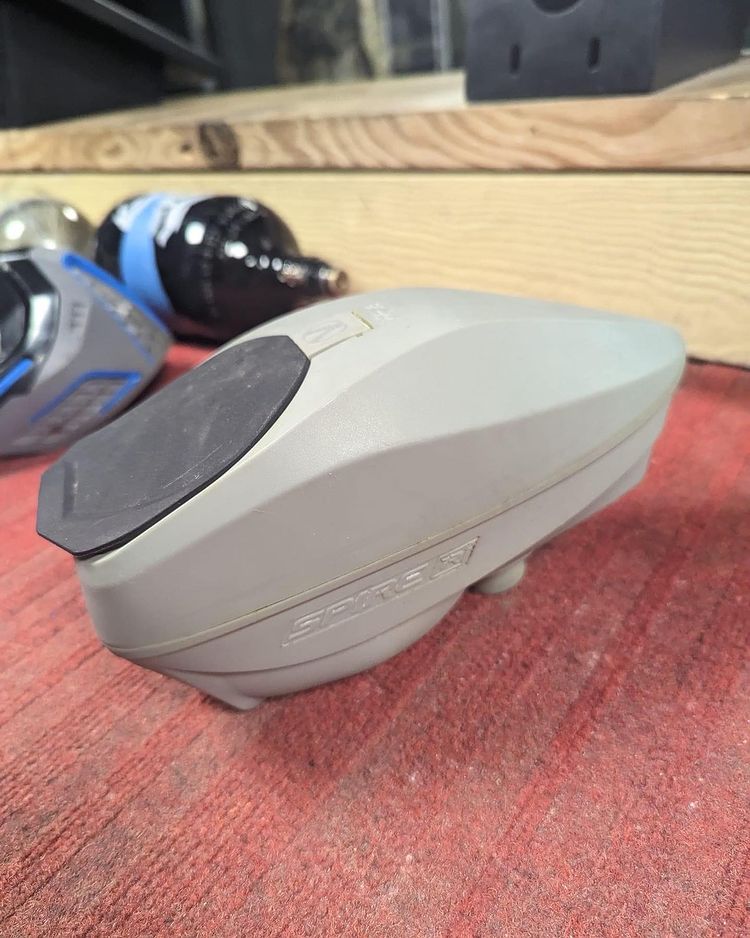Paintball hopper is one of the most important equipment after mask and marker. It isn’t the accessory that protect your any body part but it helps you to increase the efficiency or speed of your play. Considering problems like jamming, pulsing and feeding I have compiled a list of best hoppers.
Not the latest but the Dye LT-R is the best paintball hopper available right now in market. Jamming and pulsing problems are the major among hoppers. There are many paintball hoppers in market that advertise themselves as best, lets see which hopper is best in different paintball arena.
3 Best Paintball Hopper Money Can Buy
3. Best Budget Paintball Hopper
Virtue Spire IR2

Specification
- Constructed with durable nylon shells
- 3-eye feeding technology that continuously monitors paint.
- N Charge Battery Pack
- Toolless lid
1. Best Hopper for Paintball (overall)
DYE LT-R

Specification
- Feeding at a rate of 30+ balls per second.
- 3 AA batteries
- Shot count of 80,000+ balls
- Built-in anti-jam Sharkfin release trigger
2. Fastest Paintball Hopper
Dye Rotor R2

Specification
- Adjustable Capacity Loader choose between 200 or 260 round
- Feeds 30+ balls per second for up to 100,000 shoots
- 20% larger mouth design over the R1
- Reload Alert System and low battery indicator
You Might Like – Best Knee Pads for Paintball
Dye LT-R – Best Paintball Hopper
The Dye LT-R is an absolute gem in the world of paintball hoppers. Let me break down why I love it and why you should consider it, especially if you’re torn between the LT-R, the GI SPORTZ LVL, or any lower-tier hopper.
First off, the LT-R shares a lot in common with its Dye counterparts, and that’s a big plus. Most of the parts are interchangeable, which makes it super convenient for maintenance. It keeps up like a champ, and here’s the kicker – it’s remarkably quieter than the LVL loader. Plus, in terms of reliability, it outshines many other hoppers in its price range. It’s practically a dream come true for those of us who like to “Ball on a Budget.”
The LT-R boasts the same proven drive train found in other Dye hoppers, making it a breeze to take apart. Sure, it might not have all the flashy bells and whistles you’d find on more expensive options – those jeweled accents on the sides, the expanding shell, or the high-tech reload sensor like the R2 – but honestly, it doesn’t need them. This hopper performs just as well as an R2, minus the flashiness.
I wholeheartedly recommend it. Now, there’s also the LVL loader, which is a tad pricier, but it comes with a speed feed. So, why did I opt for the LT-R? Well, the LVL was just a bit too noisy for my liking.
Issue with LT-R
If I had to point out a downside, it’s that installing a speed feed isn’t super duper easy, and the lid opening could be a tad larger. But considering all the pros, this hopper is a steal and a top-notch choice for anyone looking to up their paintball game.
CONLUSION: LT-R is best among all listed hoppers.
Dye R2 – Fastest Paintball Hopper
The Dye R2 is the fastest electronic paintball hopper brings a significant enhancement over the LT-R, and it all revolves around the lid system.
What sets the R2 apart is its wider lid, a game-changer when you need to swiftly switch between the speed feed and rain lid. Unlike the LT-R, where you’d find yourself tinkering with those finicky fingers to ensure your paint stays snug in the hopper during breaks, the R2 makes it a breeze.
If you’re gearing up for high-octane speedball action, the R2 becomes the clear choice. Its lid system offers unbeatable convenience in the fast-paced arena. However, if your paintball adventures lean more towards casual recball play, the LT-R is a sensible pick, and you might even consider ditching the speed feed altogether.
It’s important to note that the R2 carries a bit of weight, but don’t let that deter you. This heftiness is a testament to its durability. On the downside, disassembling the R2 isn’t the easiest task.
In a nutshell, the Dye R2’s lid system elevates it to a whole new level, making it a must-have for avid speedball enthusiasts. It balances versatility and convenience, making it well worth the investment, even if it means handling a slightly heavier loader and a bit more complexity when disassembling. For those who demand peak performance in the dynamic world of paintball, the R2 stands tall.
Dye R2 Issues
- Bulky/Heavy
- Disassembling isn’t easy.
CONLUSION: If you specifically play speedball only, R2 would be more better for you rather than R1. Both are somewhat same but i got more thumbs up for LT-R thats why I put R2 at 2nd place
Virtue Spire IR2 – Best Budget Paintball Hopper
The Spire IR2 has undoubtedly proven itself as a solid and dependable choice, based on my personal experiences. It does have a peculiar characteristic where it occasionally agitates the paintballs seemingly at random when loaded, which didn’t bother me much until it was pointed out by a friend.
One thing I really appreciate about the IR2 is its impressively quiet operation, making it a pleasure to use on the field.
In fact, I have such unwavering confidence in the IR2, as well as all Spire hoppers, that I would endorse them wholeheartedly without hesitation. Throughout my years of playing, spanning various marker eras from the early 2000s to the latest high-end models like the Amp, LV2, LV1.6, and TM40, I’ve never encountered any issues or failures with Spire hoppers.
Allow me to share a remarkable testament to their durability. Once, I accidentally left my IR2 in the trunk of my car for several months, subjecting it to the full spectrum of Pacific Northwest weather, from freezing cold to scorching heat. The result? Corroded batteries and a sticky residue everywhere. However, a quick and simple cleaning using a damp squeegee, taking no more than 20 seconds, brought it back to life, and it continues to perform as a reliable workhorse to this day.
Issues of Spire IR2
- The latch on the spire isn’t of great quality, it can open up over hard dive.
- For those experiencing pulsing or feeding issues of spire ir2, it’s often related to feed-neck and hopper placement. Adjusting the hopper’s position to ensure proper ball alignment with the eyes can resolve this. This issue seems more common when using the IR2 with an Etha 2 marker. A quick fix involves finding an O-ring with a similar diameter to the hopper’s feed tube OD and placing it under the feedneck. This raises the hopper slightly, aligning the eyes correctly and solving the problem. While I can’t locate the specific video, this practical solution has proven effective.
CONLUSION: It is of low quality compared to R1 and R2 but performance wise it is same as R1 and R2.
Buying Guide
1. Feeding Mechanism:
- Gravity-Fed Hoppers: These are the most straightforward and budget-friendly options. They rely on gravity to feed paintballs into your marker. While they’re simple and reliable, they may struggle to keep up with rapid firing.
- Electronic Force-Feed Hoppers: If you’re into competitive paintball or enjoy rapid firing, electronic force-feed hoppers are ideal. They use motorized mechanisms to forcefully feed paintballs into the marker’s chamber. They ensure consistent feeding, even during intense firefights.
2. Capacity:
- Think about the capacity of the hopper. Standard capacities range from 50 to 250 or more paintballs. The choice largely depends on your playing style and how much paint you typically go through during a game.
3. Speed and Rate of Fire:
- For speedball or any scenario that involves rapid firing, prioritize hoppers with high feed rates. These can keep up with your marker’s firing rate and prevent jams.
4. Reliability:
- Reliability is key in the heat of battle. Look for hoppers with a reputation for durability and consistent performance. The last thing you want is for your hopper to jam or malfunction during a critical moment.
5. Weight:
- Consider the weight of the hopper, especially if you value agility and maneuverability on the field. Lighter hoppers are often preferred by players who need to move quickly and react swiftly.
6. Battery Life:
- If you opt for an electronic hopper, check the battery life. It should be sufficient to last through your gaming sessions without frequent battery changes. Some hoppers offer energy-saving modes to prolong battery life.
7. Ease of Maintenance:
- A hopper that’s easy to disassemble and clean will save you time and frustration between games. Look for hoppers with user-friendly designs that facilitate quick and hassle-free maintenance.
8. Compatibility:
- Ensure the hopper you choose is compatible with your paintball marker (gun). Not all hoppers fit all markers, so double-check to avoid compatibility issues.
9. Speed Feed Option:
- Some hoppers come with a speed feed option, which allows for lightning-fast reloading. If you value quick and efficient reloading, consider a hopper with this feature.
10. Budget:
– Set a budget based on your specific needs and preferences. Paintball hoppers are available at various price points, so there’s likely an option that fits your budget while still meeting your requirements.
11. Reviews and Recommendations:
– To gain valuable insights into a hopper’s performance and durability, read reviews and seek recommendations from experienced players. They can provide real-world feedback to help you make an informed decision.
12. Field Regulations:
– Keep in mind that some paintball fields may have regulations or restrictions on hopper types or capacities. Check with the field where you plan to play to ensure your hopper is compliant with their rules.
13. Warranty:
– Investigate whether the hopper comes with a warranty. A warranty can offer peace of mind in case of defects or issues with the product.
Remember that the best paintball hopper for you will depend on your unique playing style, preferences, and budget. Take your time to research and choose wisely, as the right hopper can significantly enhance your paintball experience and performance on the field.
DIFFERENT PAINTBALLS COMPATIBLE WITH HOPPERS
In the world of paintball, various types of paintballs are used, each with its own unique features. Let’s explore the main types:
- Standard Paintballs:
- These are the basic paintballs made of a plastic shell filled with water-soluble paint or gel.
- They are the most common choice and work with most hoppers.
- Low-Impact Paintballs:
- Designed to be less painful, often used indoors and in youth leagues.
- These paintballs have a softer shell and less paint, reducing the chance of breaking on impact.
- They are generally compatible with most hoppers but may feed more slowly.
- First Strike Paintballs:
- These paintballs have an aerodynamic shape, allowing them to travel further and with greater accuracy.
- They feature a pointed tip for improved range.
- However, they are not compatible with most standard hoppers and require a specific hopper designed to handle their shape.
Keep in mind that using the right paintball type is crucial for your hopper’s performance. Using incompatible paintballs can lead to feeding issues and potential jams. Always check if your hopper is suitable for the paintballs you intend to use before making a purchase.









